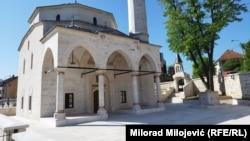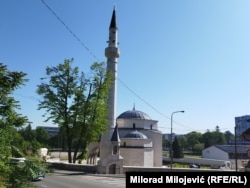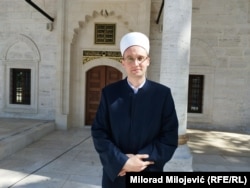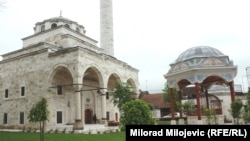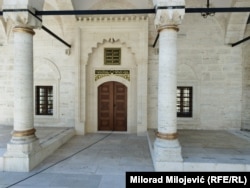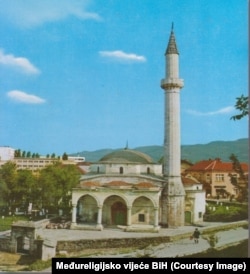BANJA LUKA, Bosnia-Herzegovina -- For nearly 400 years, a 16th-century Ottoman mosque stood in Banja Luka before it was leveled by explosives in the middle of the night on May 7, 1993. For years, its fragments were patiently collected from garbage dumps and the nearby Vrbas River in hopes that one day the mosque would stand again.
On May 7, the renovated Arnaudija Mosque formally reopened, marking the 31st anniversary of the night it and a nearby mosque were bombed in an act of ethnic hatred.
Opening the mosque doors to not only its faithful but individuals of all faiths is its chief imam, Muamer Okanovic.
"For believers and for all citizens, Banja Luka can once again experience one of its significant heritage sites," Okanovic said, before adding that he hopes the opening will "improve relations among the city's residents."
According to the Islamic Community of Bosnia and Herzegovina, an estimated $3.3 million was used in the seven-year restoration. Though the mosque looks new, visitors who spend time on its grounds will see portions of the original 16th-century stonework and details.
"These artifacts, these fragments, should be reminders for every visitor, for every person who comes to the mosque, that certain things that happened several decades ago should never happen to anyone again," Okanovic said.
"The task for us all, is to be builders and never destroyers," he added.
Though no fighting took place in Banja Luka during the 1992–95 Bosnian War, the city was subjected to a deliberate and systematic ethnic cleansing campaign that forced out its non-Serbian population and obliterated its cultural heritage.
On May 7, 1993, the Ferhat Pasha Mosque (Ferhadija), a cultural heritage site that received UNESCO protection in 1950, was blown up first. Some 15 minutes later, the Arnaudija mosque suffered the same fate.
The large-scale destruction of both mosques required large quantities of explosives and extensive coordination, yet the perpetrators were never found.
By the time the war in Bosnia ended in 1995, almost all of Banja Luka's Muslims and Croats -- about 30 percent of the prewar population -- had left the city. Even today, few have returned to the city, which is the political and financial center of Republika Srpska, the Bosnian entity dominated by ethnic Serbs.
Of the 15 mosques destroyed in Banja Luka during the war, the Arnaudija is the last to be rebuilt.
For Okanovic, the mosque's reconstruction and opening are a new chapter in not only Banja Luka but also Republika Srpska and the rest of Bosnia-Herzegovina.
"With strength, a pure mind, and reason, we hope to observe a more beautiful, brighter future for all our generations," he said.
During the 1992-95 Bosnian War, a total of 614 mosques were destroyed, and another 307 were damaged. Additionally, 353 Catholic churches were destroyed or damaged, and 125 Orthodox churches were also reduced to ruins.




